Quebec’s Côte Nord is a new area that many Quebecers have recently discovered and fallen in love with. We can’t blame them. We recently did a 3-week road trip in the region, and absolutely fell under its charm. A perfect balance of historic and cultural heritage, natural beauty, and landscapes make this a perfect road trip destination. And despite having way too many places to discover, here are the top 10 attractions to discover on your Côte Nord road trip.
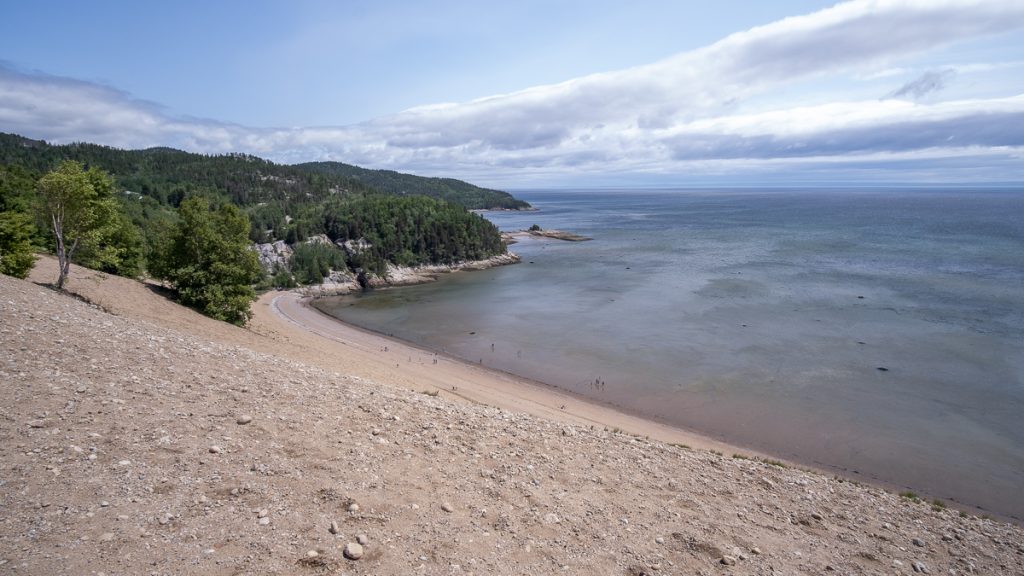
This article may contain affiliate/compensated links. For more information, please see our disclaimer here. We take all the efforts necessary to ensure the information included in this post is accurate, correct and current, sometimes, things just change! Travel information like opening hours, business operations and prices may change. If you find anything in this post that is incorrect or outdated, please let me know in the comments so I can update it for other readers. Cheers!
We love helping you plan amazing trips. If you need any of these services, consider booking them through our affiliate links. Without costing you anything extra, you will be helping support us so we can continue to write these blogs for you.
We thank you again for your continued support.
🏠 Find the perfect place to stay with Booking.com
✈️ Get the cheapest flights with Skyscanner
🚣 Book your favorite activities with Viator
💻 Make sure you have everything you need for your epic trip by checking our store on Amazon
Table of Contents
Where is the Côte Nord located?
As the name says (in French, albeit) the Côte Nord is located on the North Shore of the St Lawrence River and stretches out for 1,300 km from Tadoussac to Blanc-Sablon. Like most of the north shore, some places are not accessible by car, only by boat or plane. We chose to road trip all the way to the end of the road, until Kegaska – the last town accessible by car on Highway 138.
Quebec’s Côte Nord is known for its quaint towns & villages, white sand beaches (yes, you read correctly), rocky coasts, boreal forests, rock formations, whales and so much more. With so much to offer, it’s no surprise so many people flocked to discover the area in the last few summers of precautionary local travel.
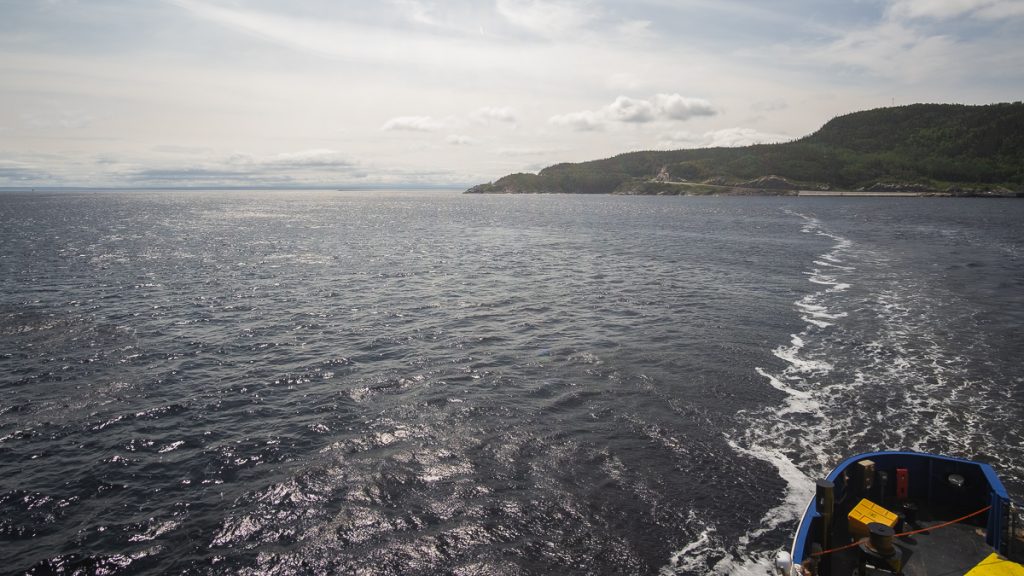
Tadoussac is the first town in the Côte Nord, and just to make your arrival to the region very special, the only way to access the town is by taking a short free ferry ride. Tadoussac is located 475 km away from Montreal, and 220 km from Quebec City. Most people only make it to Tadoussac when they head on this road trip, but we’re here to tell you to drive on. Drive on until the end of the road!
Road tripping down Highway 138
Highway 138 is a mythical road in Quebec. As we mentioned, this is the road that will take you the furthest east you can drive on the Côte Nord. This one lonely road (ok, it’s not so lonely) is the only route you have to take from Tadoussac to Kegaska.
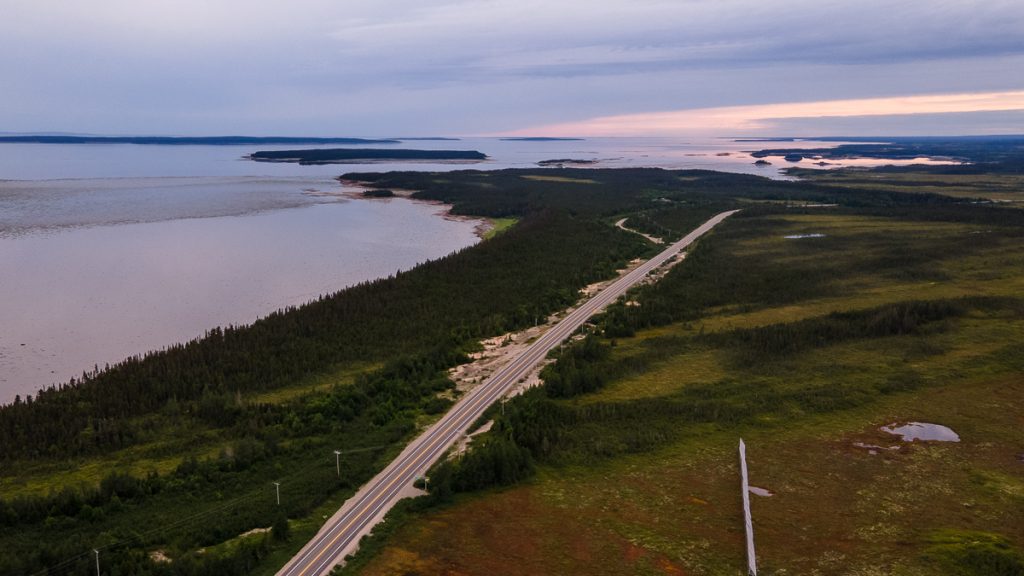
We’ll be sure to create a guide for road tripping down Highway 138, but until then, here are the top 10 attractions to discover on your Côte Nord road trip in Quebec.
The top 10 attractions on Quebec’s Côte Nord
Of course, there’s a ton to do on the Côte Nord, and yes, there’s something for everyone and every budget. As much as we would have loved to have a lot more time to explore the area, these are the must-see and must-do things on the Côte Nord. We tried to include a variety of activities so that you can get a true sense of the region, and want to keep coming back for more.
1. Tadoussac, discover the first stop on the Côte Nord
Tadoussac is a must-see town on Quebec’s Côte Nord. As we mentioned, it’s also the first town that greets you into the region. Tadoussac has this almost mythical status in Quebec culture because it’s so close yet so far. Sure, the free ferry ride may make it feel more exotic than it is, but it’s a cute town to discover, with plenty to see and do.
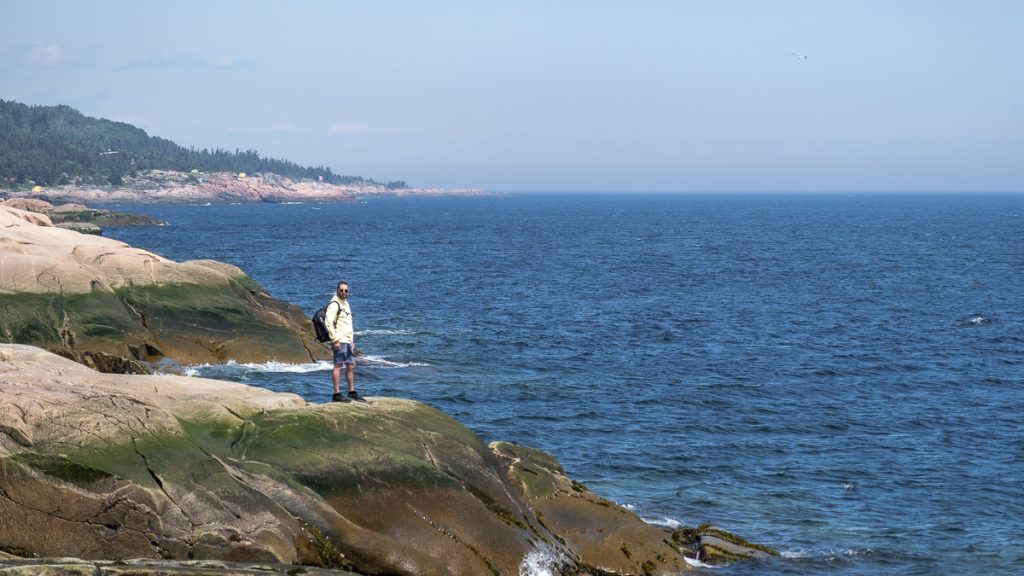
Most people will come to Tadoussac and hop on a zodiac or cruise boat to go whale watching. If there’s one piece of advice you take from this article, please avoid going on these boat rides. They are terrible for the climate and create a hostile and stressful environment for the sea animals you’re trying to see. Truth is, most boats don’t respect the guidelines when it comes to staying far from whales and belugas. So please, avoid this activity, even if the tourism board tells you that these strict guidelines are followed.
Instead, head to the CIMM, the Marine mammal interpretation Centre. There, you will find a ton of whale skeletons to look at and learn so many things about these majestic marine mammals. In fact, the CIMM is home to the largest collection of whale skeletons in Canada. And best of all, your entrance fee will help further marine mammal research! And if you want to go whale watching, check out #2 on our list.
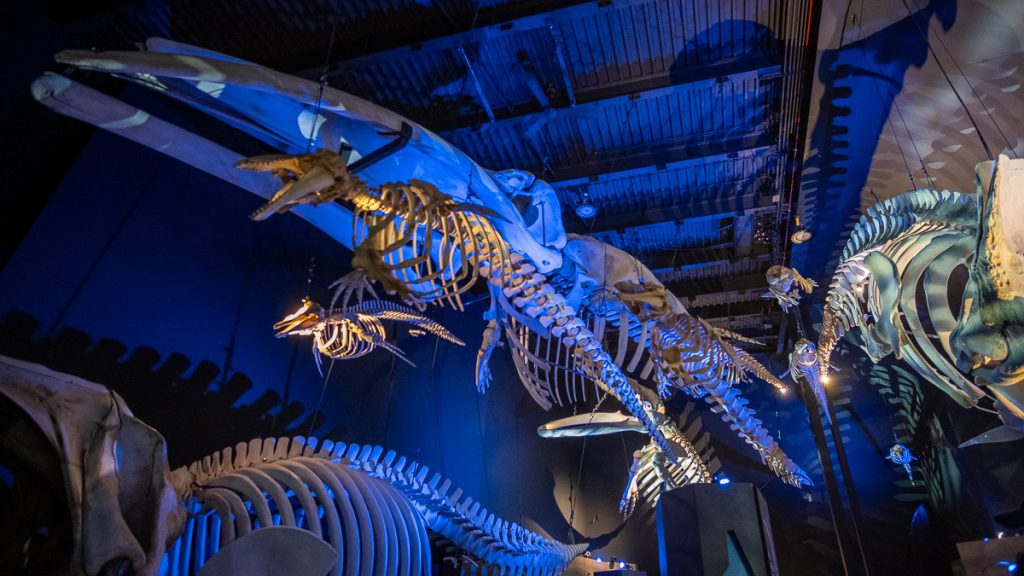
While in Tadoussac, you can also head to the beach – take your pick, there are a few. Our favorite was the beach by the dunes. At low tide, you can walk so far out into the shore. There are also a few hiking trails to explore that allow you to have amazing views of the waters. And, there are a ton of great restaurants to choose from here. It’s really a cute town to discover on foot.
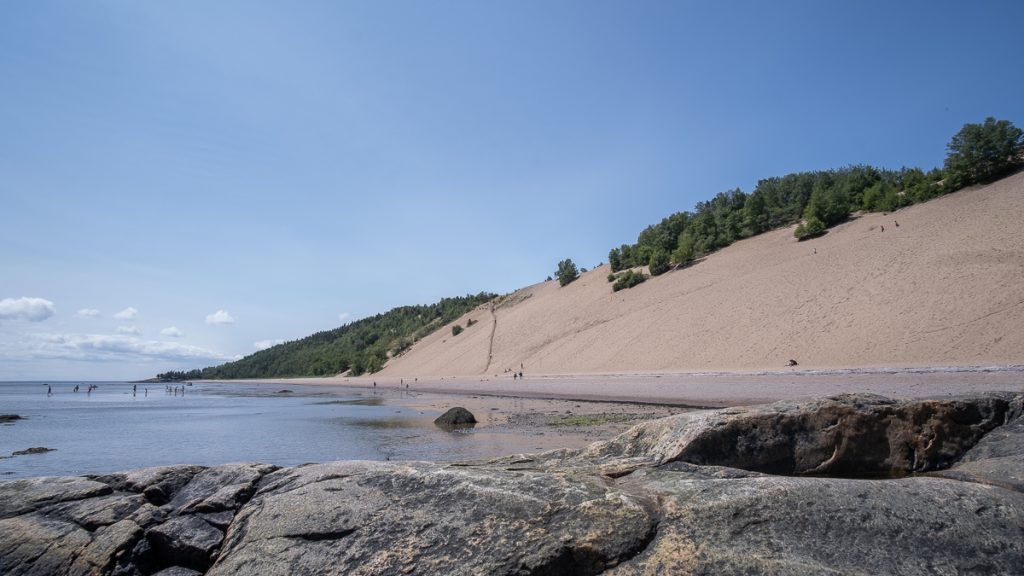
2. Watching whales in Cap-de-Bon-Désir, a must-see on the Côte Nord
The Côte Nord is probably one of the best places in Quebec to see whales. And the beauty of it is that you really don’t need to get on a boat to do it. Often, we saw whales from the shore. And that, friends, is the best way to see whales.
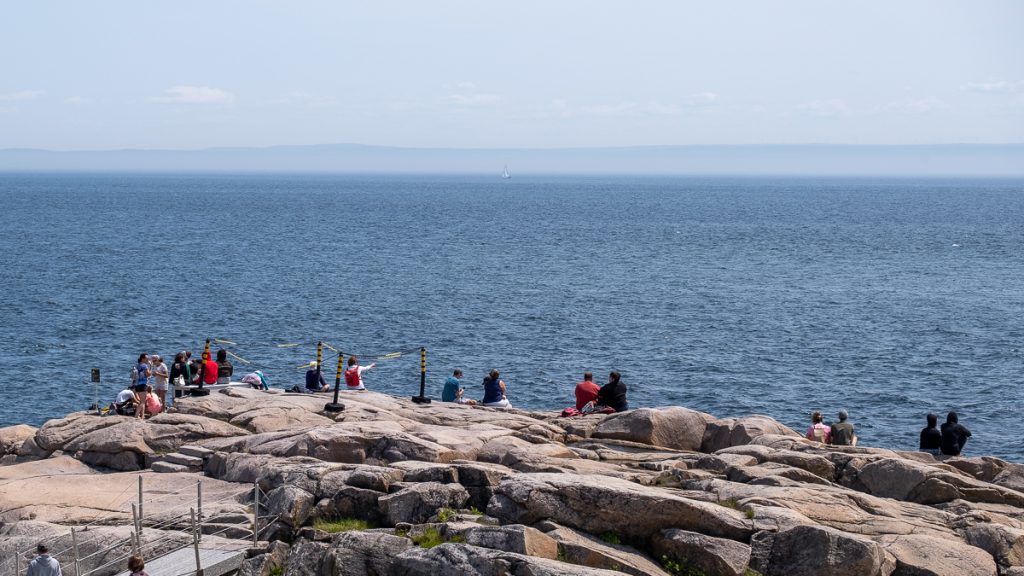
In Cap-de-Bon-Désir, there is a Parks Canada interpretation center where you can learn more about whales, and watch them from the rocky shore. After you park, you walk down a forest trail for about 10 minutes, which opens up to a beautiful rocky area. There, you can literally spend all day watching whales pop in and out of the water. You can also see curious seals pop their heads up.
It does tend to get quite windy and cold on the shore, so we recommend you dress in layers, even in the middle of the summer. Also, you’ll want to stick around here for a while, so don’t be shy to bring a snack to enjoy while whale-watching. And of course, don’t forget your binoculars! You’ll need them to spot some of the whales that pop up in the distance.
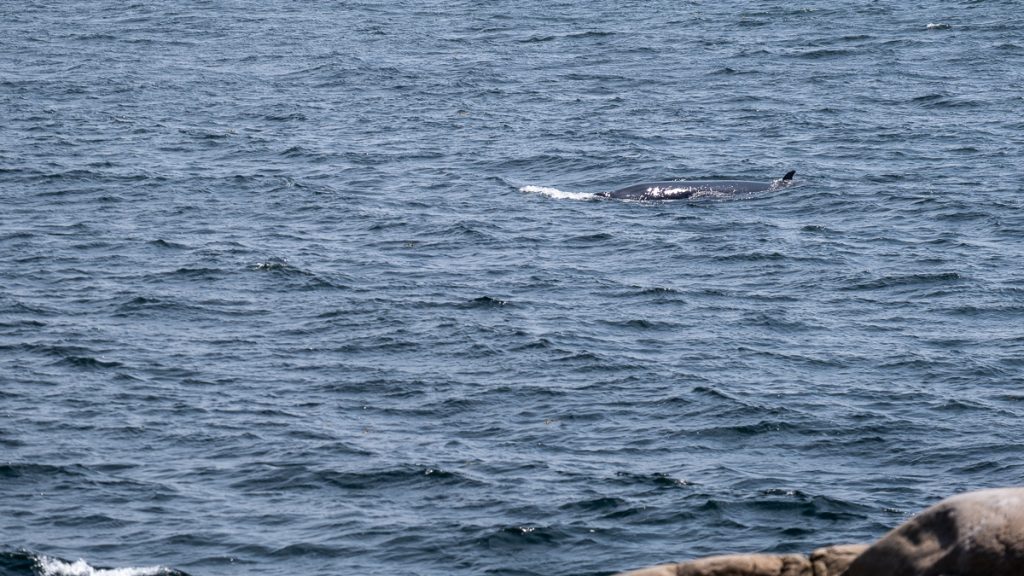
The best season to watch whales in the region is from May to October. Sightings have gotten more frequent and numerous in September and October, but July and August are still great times to go as well. We were there at the end of July-early August, and spotted a good number of whales, from Tadoussac all the way to Longue-Pointe-de-Mingan.
3. Walking the white sand beaches of Forestville, a top landmark on the Côte Nord
This may seem so counter-intuitive and weird, but some of the most beautiful beaches in Quebec are very far north! If you are looking to relax and enjoy the softness of white sand beaches, then this Côte Nord attraction is for you.
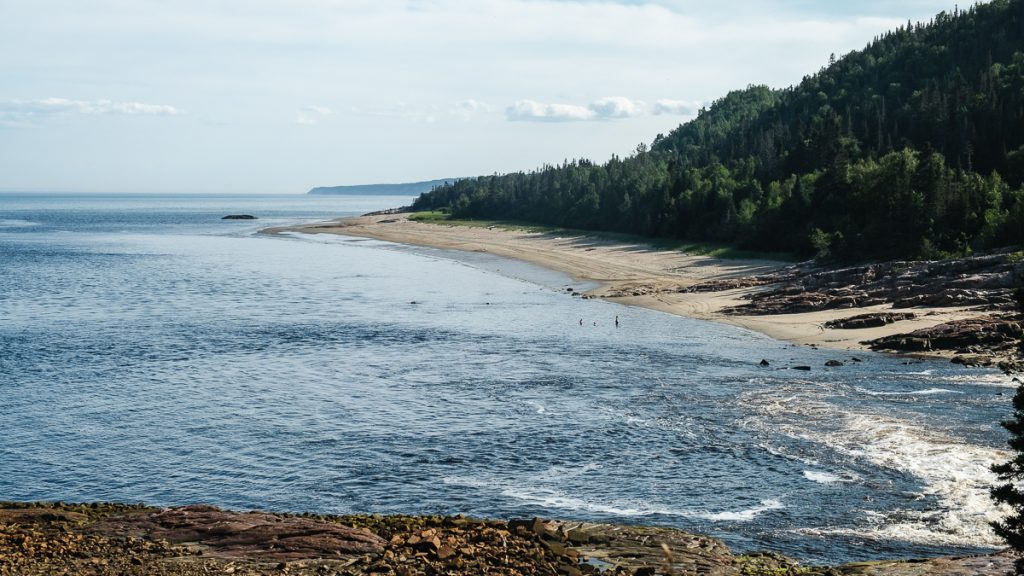
Forestville is a small town of barely 3,000 people, but there is a major landmark that shouldn’t be overlooked – its famous beach of Baie-Verte. White sands as far as the eyes can see. Calm and peaceful waters that are just cold enough to cool you down on a hot summer day. This is where, in 2017, they shot The Truth About the Harry Quebert Affair starring Patrick Dempsey.
Since then, this has been the town’s claim to fame. And we can’t blame them. This beach is beautiful and if you have an afternoon to spend chilling out, we highly recommend you do so.
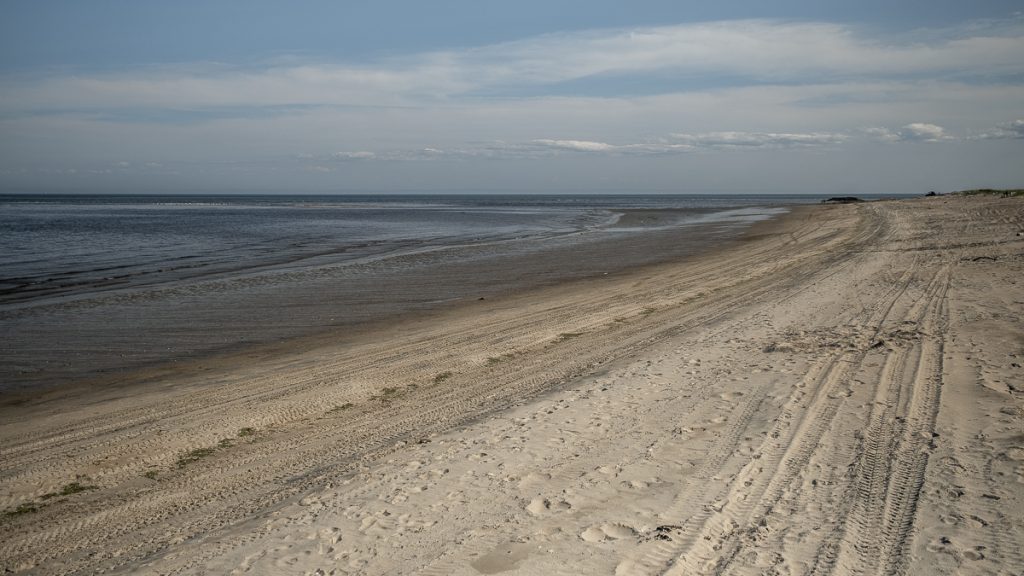
Luckily, there are a bunch of other beaches around the Côte Nord where you can also relax and catch your breath. We found great ones at Longue-Pointe-de Mingan, Pointe-aux-Outardes, Port-Cartier and Tadoussac. Each one has something different to offer, depending on what you’re looking for. And especially, depending on where you are on your Côte Nord road trip.
4. Discovering the Parc Nature de Pointe-aux-Outardes and getting your bird-watching fix
Parc Nature Pointe-aux-Outardes is one of those must-see attractions you can’t miss on the Côte Nord. And there are a ton of reasons why! On top of 30 km of beaches (yes, we sure love those beaches), the park itself is home to nine different ecosystems. It’s also the perfect place to go bird-watching.
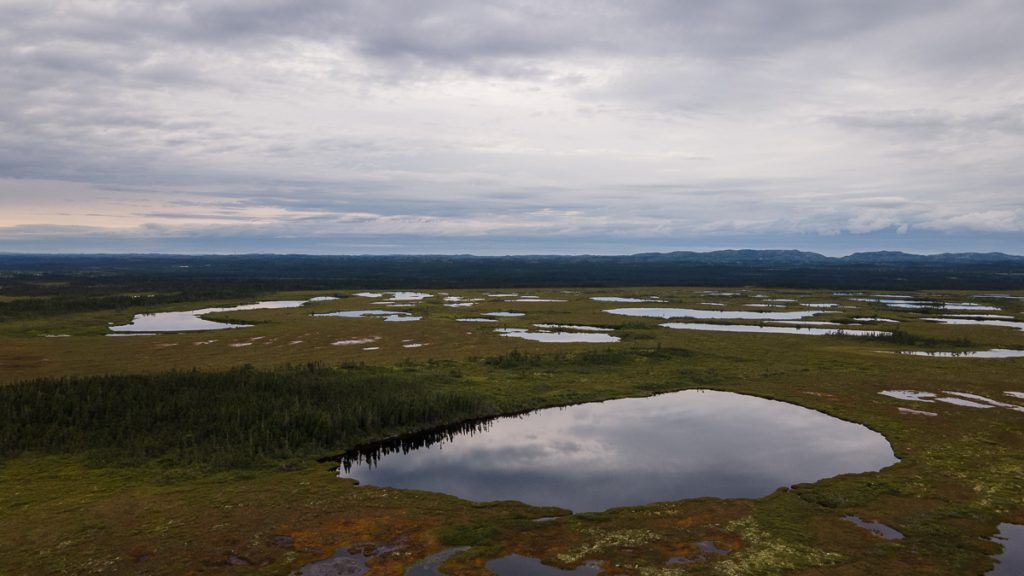
In fact, sprinkled all throughout the Côte Nord, you’ll find a bunch of bird-watching stations. The region is really renowned for its biodiversity and variety of birds. In fact, you can spot over 255 varieties of birds in the region. And the Parc Nature is the perfect place to pull out your binoculars – it’s rated as one of the top 5 places to bird-watch in Quebec.
The Parc Nature also features really cool bird-houses and different types of unique accommodations that you can rent and sleep in. Make sure you book your spot quickly if you want to do this, as they tend to get snatched up very quickly.
5. Check out the Manitou waterfall near Rivière-au-Tonnerre, a must-see on Quebec’s Côte Nord
We absolutely love chasing waterfalls! And we were spoiled while on this Côte Nord Road trip. The Chutes Manitou is one of the most spectacular waterfalls we’ve seen in a while, so it’s the top one on our list, but there are a ton of other falls in the area that are worth the visit. Make sure you check out our full article here, where we have listed the 14 best waterfalls in Quebec.
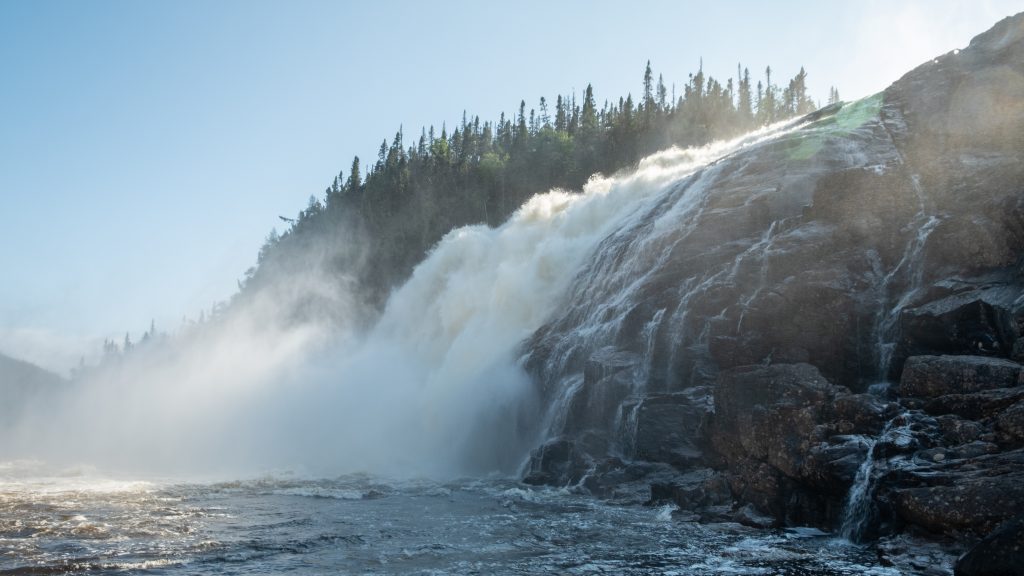
Located right off Route 138, about 30-40 minutes before getting to Rivière-au-Tonnerre, you will find the Tourist information office for the region. Park your car, and hike down the trail to see this majestic waterfall. The hike isn’t very long, but it’s totally worth it to see this huge waterfall up close and personal.
We highly recommend you wear hiking shoes, as the trail tends to get wet and muddy. Also, bug spray is a must! Little sandflies will be relentless in their attack. They’re here for blood so beware.
6. Going to the Mingan Archipelago, a top sight on the Côte Nord
This is the whole reason we came to the Côte Nord. Carine spotted a picture of the Mingan Archipelago, with its rock formations, and that was it. It’s all it took to drive 13 hours, hop on a boat and go to this mythical place.
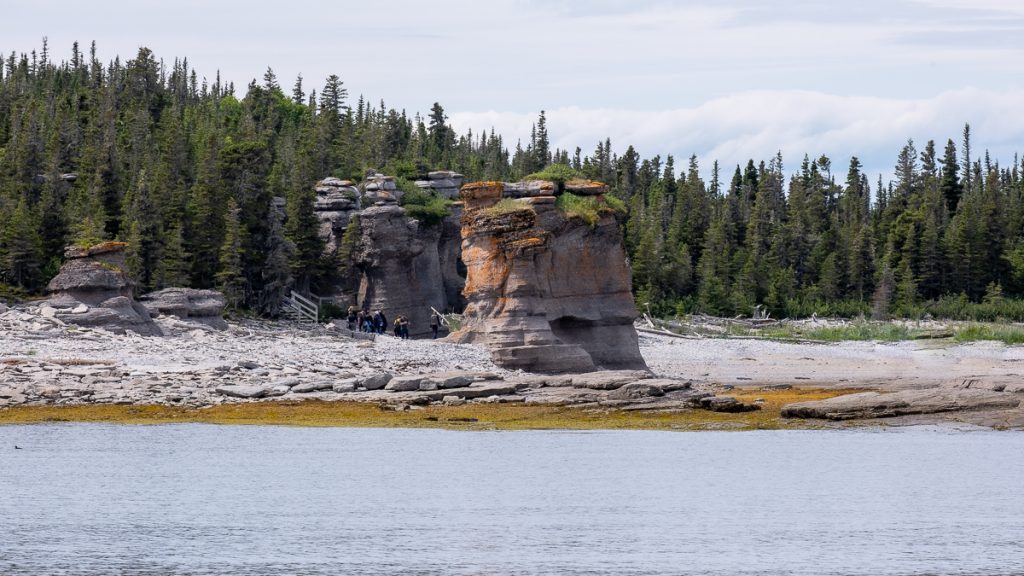
The Mingan archipelago is made up of many different islands. Excursions usually leave from either Longue-Pointe-de-Mingan or Havre-Saint-Pierre and they head to very different islands.
From Longue-Pointe-de-Mingan you can visit Île aux Perroquets, Grande Île, and Île Nue. The first is known for its iconic red and white lighthouse, Atlantic puffins, and razorbills. On Île Nue de Mingan, you’ll find seals and some limestone monoliths. It’s actually called Île Nue (Naked island) because there are no trees on the island.
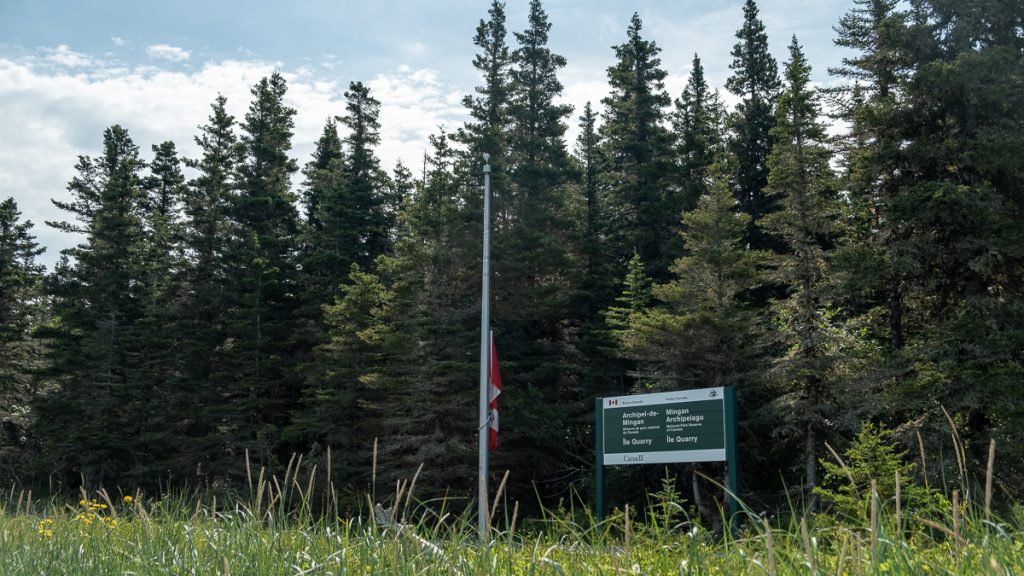
We chose to head out from Havre-Saint-Pierre and visited Île Quarry, Île du Fantôme and Île Niapiskau. Île Quarry is home to an amazing forest with many trails to explore, and these crazy monoliths. Île Niapiskau has more giant limestone formations, and a ton of fossils to discover. Île du Fantôme is known for its arctic & alpine plants, normally found in mountainous areas or beyond the 56th parallel in Quebec. Plus, it has a ton of cliffs, monoliths, and ledges.
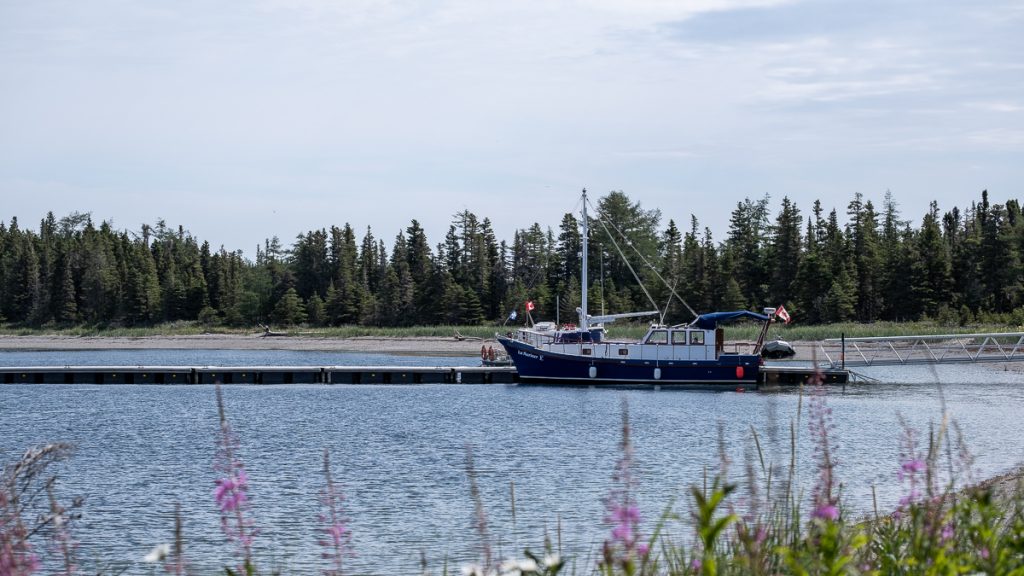
We chose to go with a small boat and we loved our choice. Capitaine Richard and his partner were great in explaining where we were going, what we were going to see. They even made extra journeys to show us things that were not on the itinerary. Plus, because we were only about 12-15 people on the boat, we felt like we had more room on the boat, and it wasn’t at all a big ‘cruiser’ type excursion with 100 other people. In fact, whenever we got to an island, we had so much time to explore it for ourselves before the bigger groups arrived. And just that was worth it!
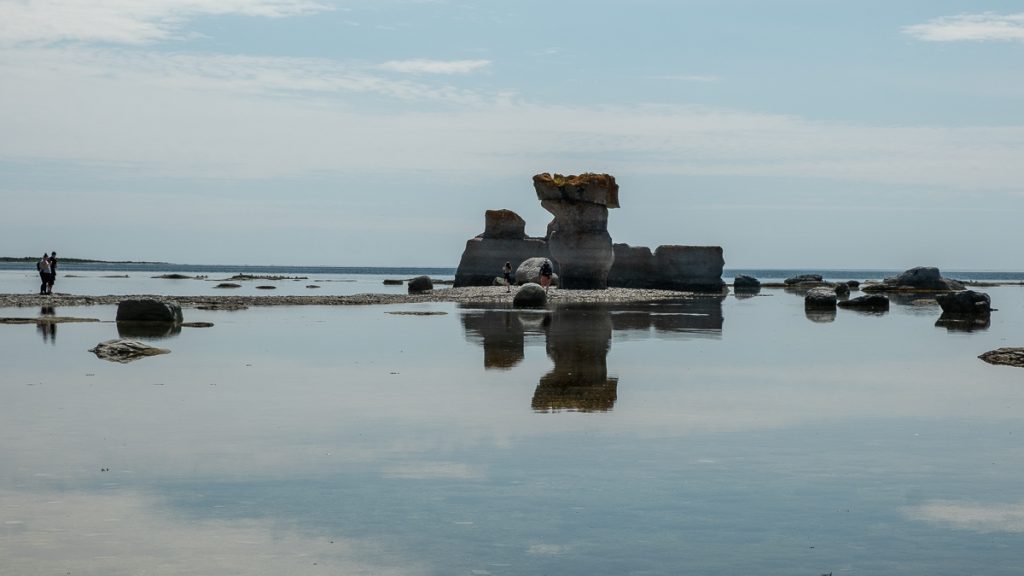
7. Discovering the mythical town of Natashquan, a top landmark on the Côte Nord
Natashquan is one of those mythical towns that we heard so much about when growing up in the province. In fact, it gets a lot of its fame from the many songs legendary songwriter Gilles Vigneault has written about the town. Its road was only built in 1966, making it even more legendary back then.
There is a real foodie culture growing in Natashquan with many restaurants and artisans operating in the area. The town is also home to Les Galets, a grouping of 10-15 little homes and hangars that used to be home to the local fishermen over 150 years ago. This iconic ‘town in a town’ still attracts a ton of tourists today. Walking through the homes is like taking a trip back in time.
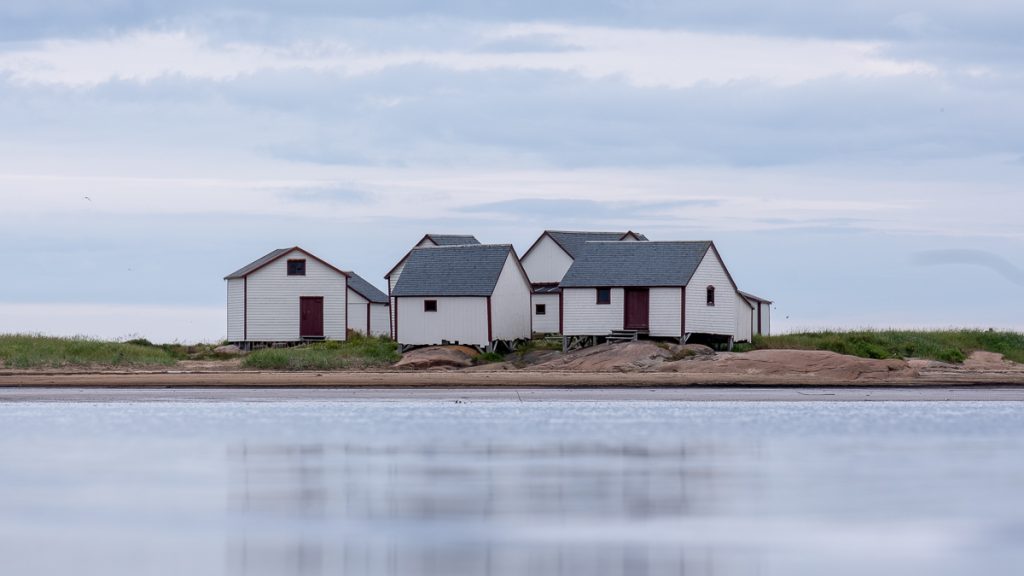
If your route allows it, Natashquan is a good place to set a base up and explore the area. It’s a larger town, so you’ll find a few more amenities here. However, if you’re looking for a ‘real’ big town, Havre-Saint-Pierre is the last spot on the 138 that has over 3,000 people living there, so it may be a better option, depending on what you’re looking for.
8. Driving to the end of Route 138, to Kegaska – a must-do on a Côte Nord road trip
The end of the road! There is something so epic saying we made it here. And the joy of seeing that ‘138 Fin’ sign is palpable for all who make it here. In fact, many people leave stickers or sign the board to show that they have made it here.
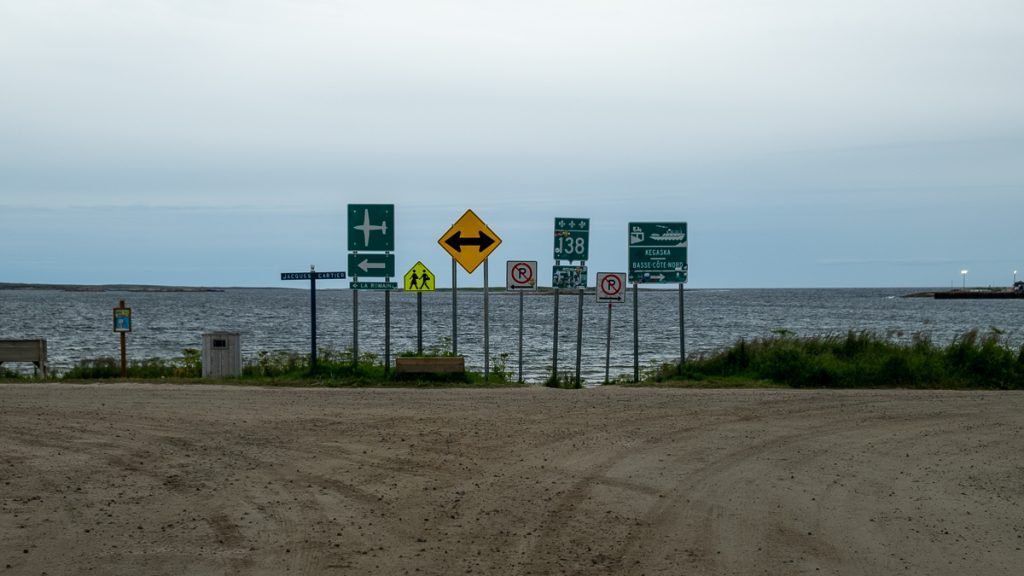
Kegaska is not a big town by any means, it’s about 90 people big. But the energy here is awesome. This fishing town is great to walk through. There are a ton of relics here. And our favorite was discovering the Brion shipwreck on the shore.
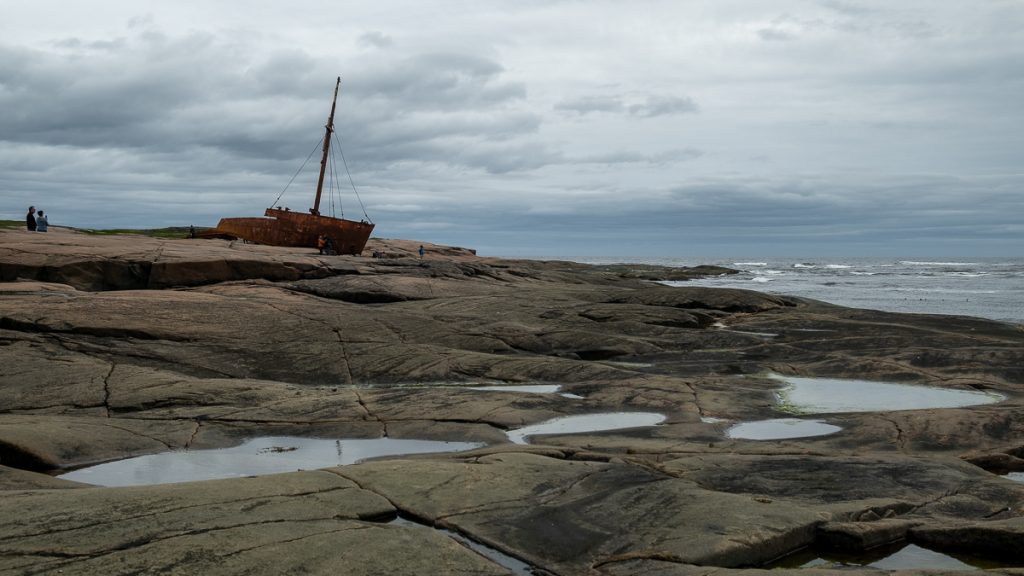
The shipwreck is probably the second most famous stop in Kegaska. The metal shell of a boat that sits atop the rocks is impressive, to say the least. The area is also very cool to walk along. The rocks are sprinkled with dead urchin shells that were eaten by birds. Plus, if you’re campervanning, you can park in the wild here.
9. Discovering Innuit culture, a must on a Côte Nord road trip
This is one thing we wish we had done more of. Truth is, the pandemic, and our lack of planning didn’t allow us to dive deeper into the rich Innu culture of the region. Just another reason we want to head back to the area!
There are actually a few notable places to take in the culture and history of the First Nations people on the Côte Nord. A lot of the towns still bear the names of their original names, like Nutashkhuan, Aguanish, Ekuanitshit, and more.
You can visit the Maison de la culture innue in Ekuanitshit where you can learn about the history of these people who were hunters, fishers and artisans. You can even purchase some handmade goods from the store. There’s also the Maison de transmission de la culture innue Shaputuan in Sept-Îles, and Wabush au pays des Innus at the Parc Nature Pointe-aux-Outardes. These places will give you a small glimpse into the history and heritage left by the First Nations people who have lived and still live in the area.
There are also many First Nations artisans that have set up shop and they sell their handmade goods. A worthy investment if you’re looking to support local artisans and give special gifts, instead of tacky souvenirs.
10. Enjoy the local food and beer from local microbreweries
We’ll be honest, being vegan on the Côte Nord was not an easy task. Luckily, we were camping, which meant we made our own food most of the time. However, if you don’t have food restrictions, you’re in for quite a treat on the Côte Nord. The seafood is quite fresh, after all, these are towns that have a rich fishing history. You can even treat yourself to typical Inuit cuisine. And don’t forget trying the local berry – the cloudberry (or chicoutai in French)
We chose to treat ourselves to trying as many local brews instead of the food. Much less restrictive! In Tadoussac, we had the tasting menu at the Microbrasserie Tadoussac, bought some Microbrasserie St-Pancrace and La Compagnie beers at the grocery store, and tried every variety of Brasserie La Mouche‘s microbrews made from indigenous yeast.
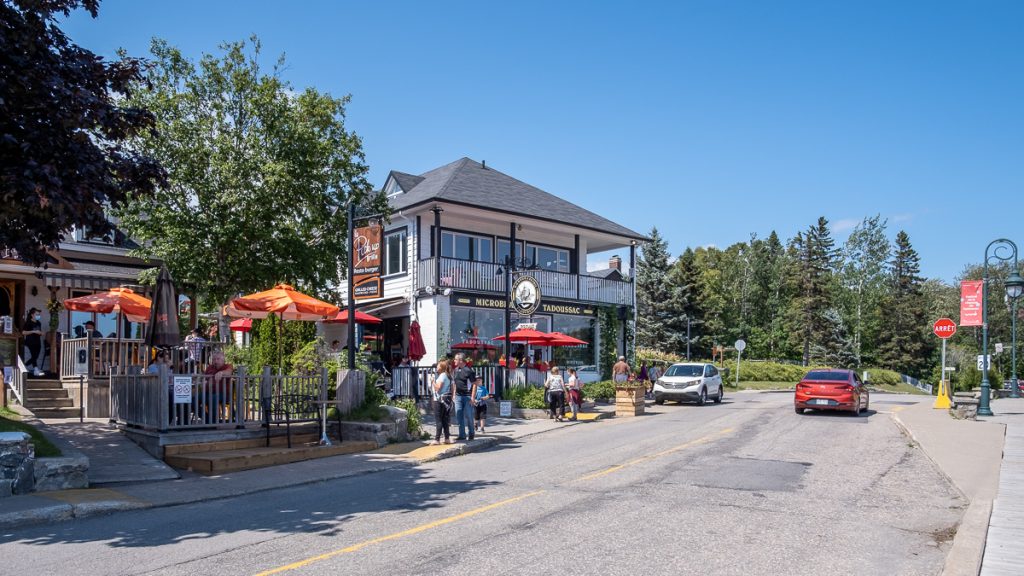
There are a ton of local delicacies to try along the route, so make sure you stop and enjoy a bite when you can!
Discovering the top 10 attractions on the Côte Nord
Of course, there is a ton more to see and do in the area. We would have loved to make it to the Anticosti island, or explore the national parks in Sept-Îles or Port-Cartier. Truth is, no amount of time is enough to truly enjoy everything this beautiful place has to offer. But if you’re strapped for time like we were, these top 10 landmarks should give you a good taste of what the region has to offer. And it only serves as motivation to come back and explore the area even more later on.
To recap, here are the top 10 must-see attractions on Quebec’s Côte Nord.
- Tadoussac, the first stop on the Côte Nord
- Watching whales in Cap-de-Bon-Désir
- Walking the white sand beaches of Forestville
- Discovering the Parc Nature de Pointe-aux-Outardes
- Checking out the Manitou waterfall near Rivière-au-Tonnerre
- Going to the Mingan Archipelago
- Discovering the mythical town of Natashquan
- Driving to the end of Route 138, to Kegaska
- Discovering Innuit culture
- Enjoy the local food and beer from local microbreweries
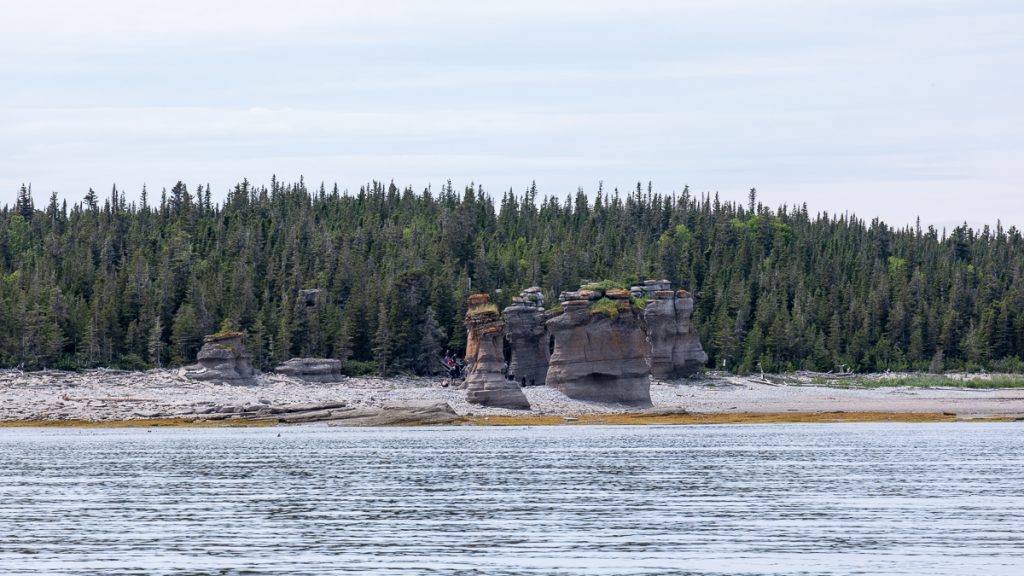
Have you ever been to the Côte Nord? Did your highlights make it on our list? What did we miss?
We’d love to head back to the northern coast and explore it more deeply. There’s so much we still have to see. But this was a great first trip to the region for us. We hope it gave you a good glimpse of the area as well, and that you’ll be excited to explore it!
We put a lot of time and effort into the content we create. Please like, comment and share, every action on your part helps us out tremendously and is very much appreciated.
You can also help us by pinning it for others to find.
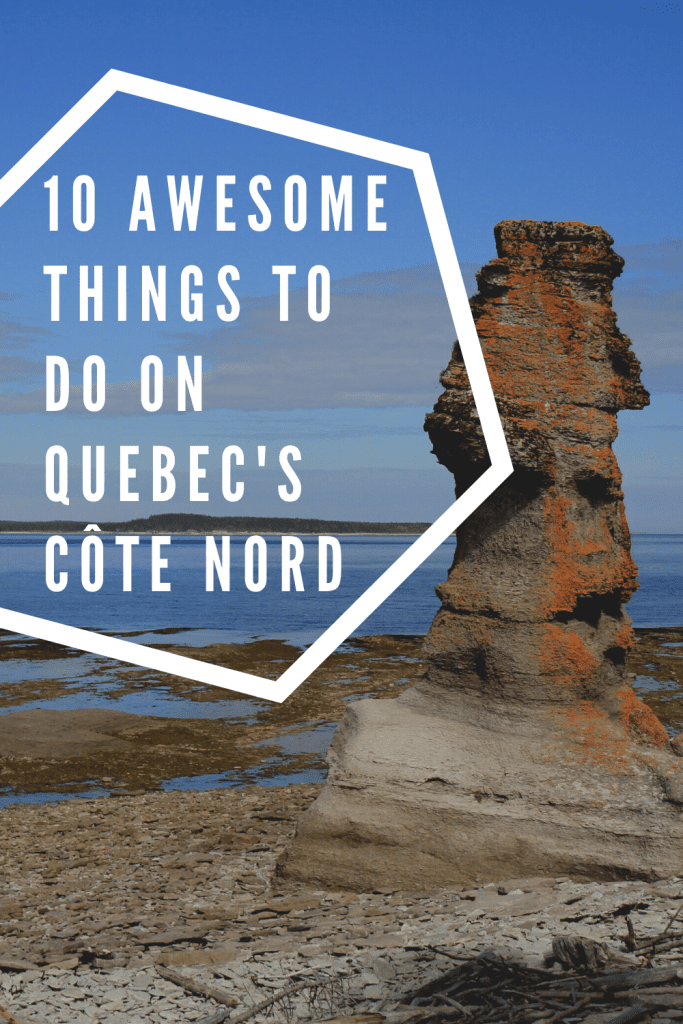
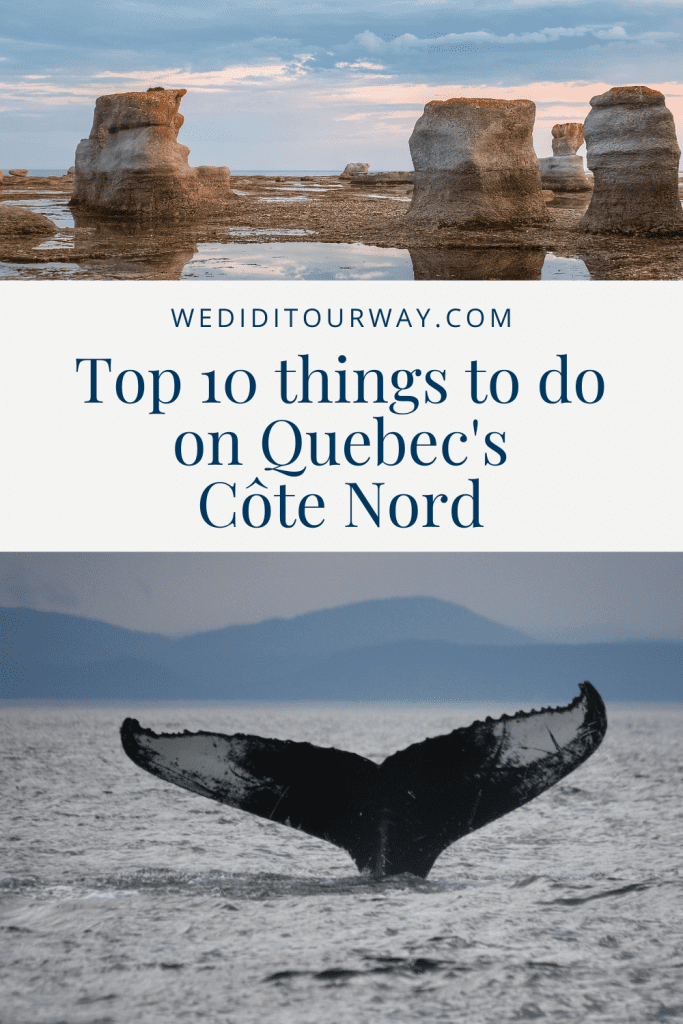
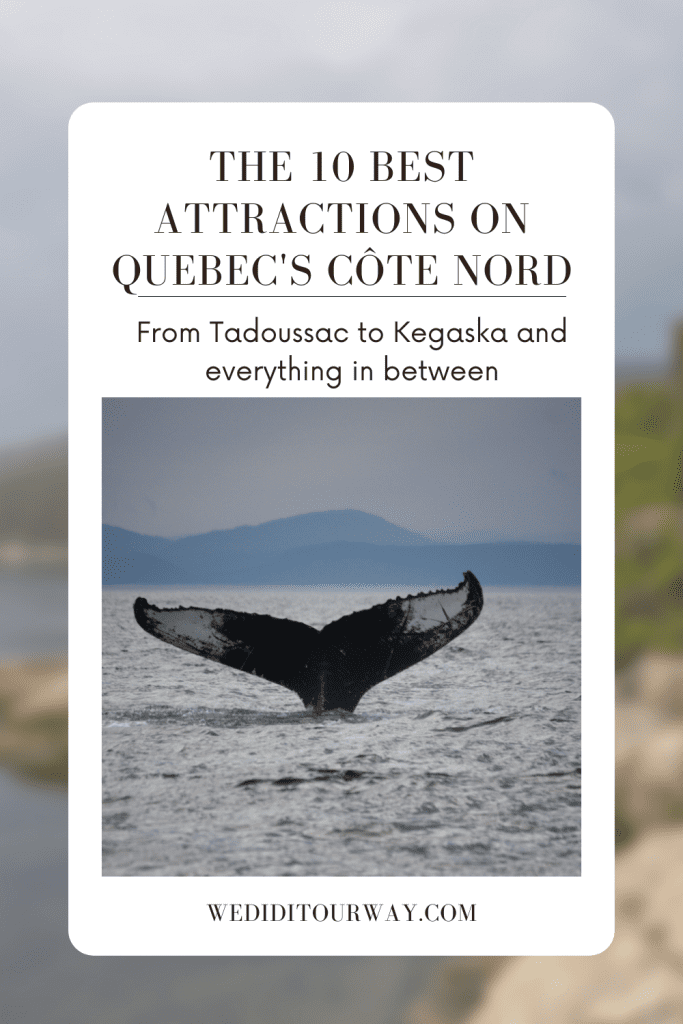
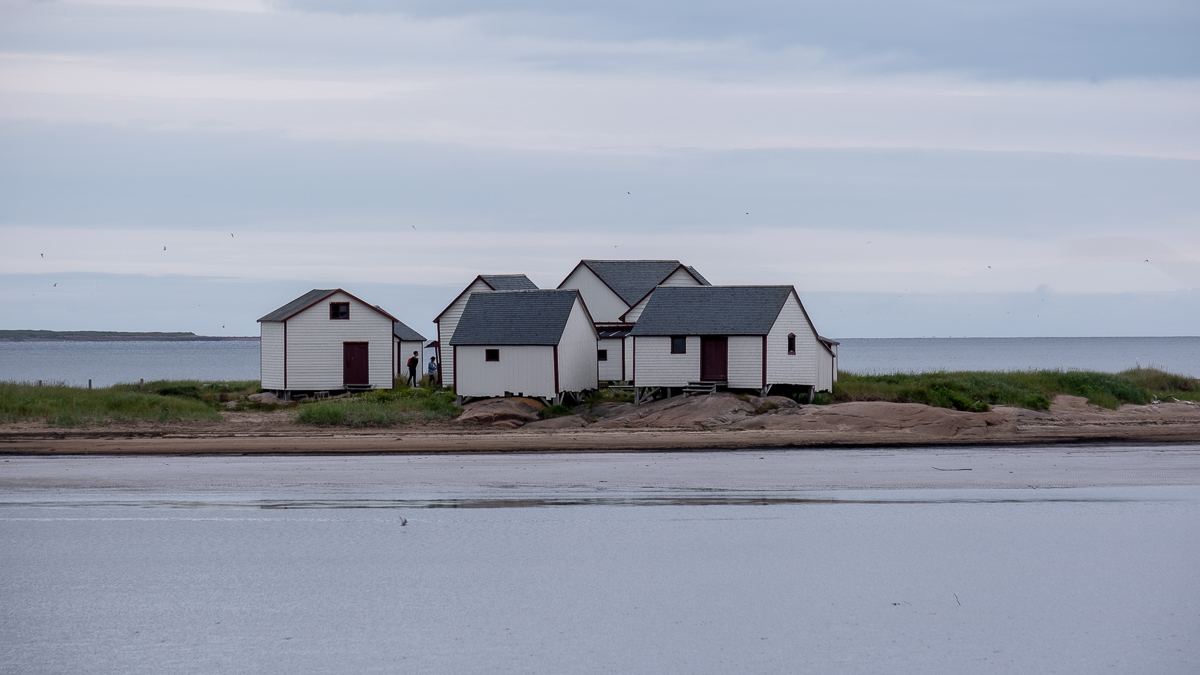
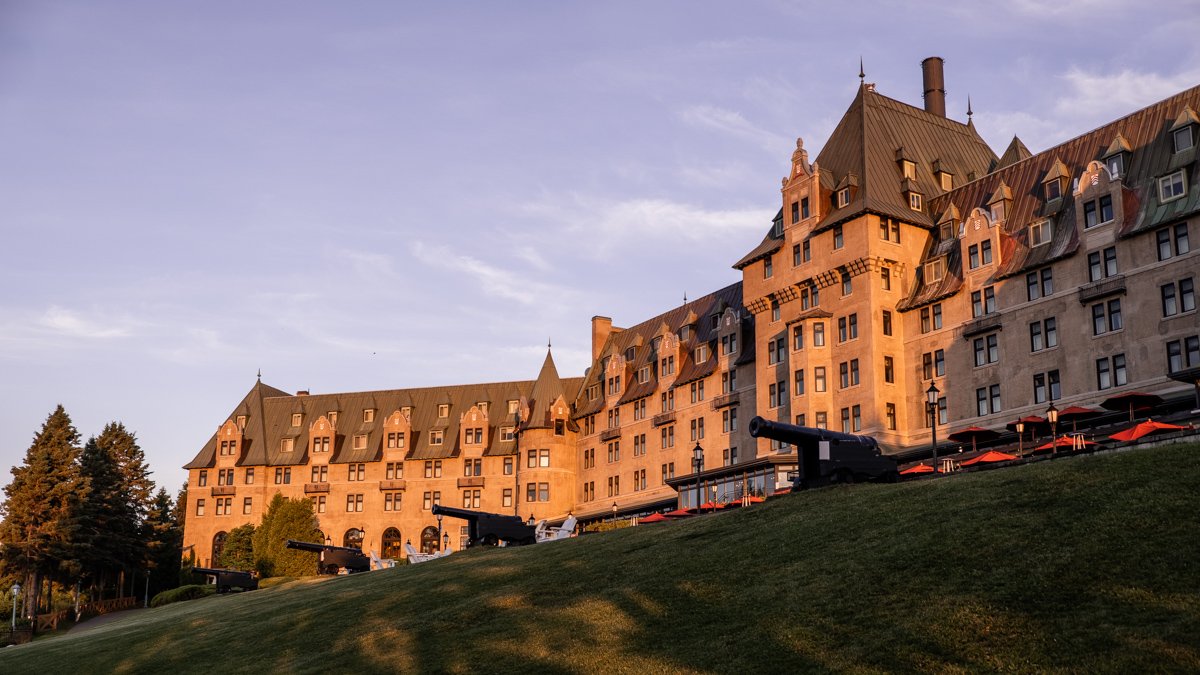
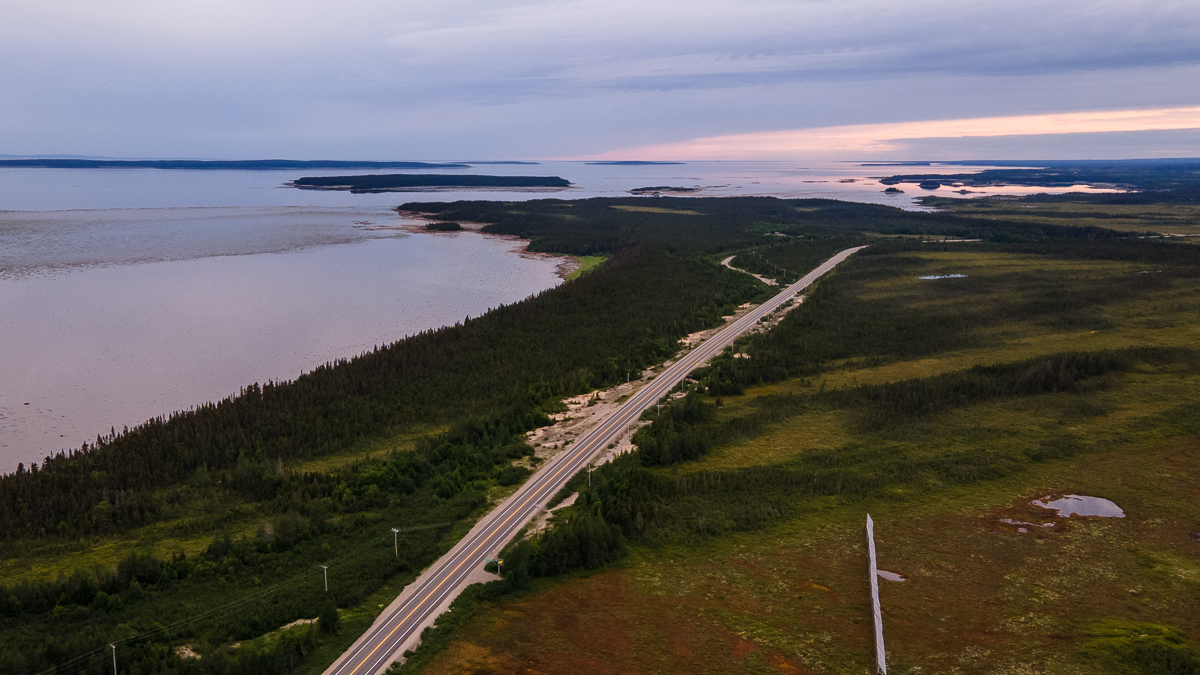
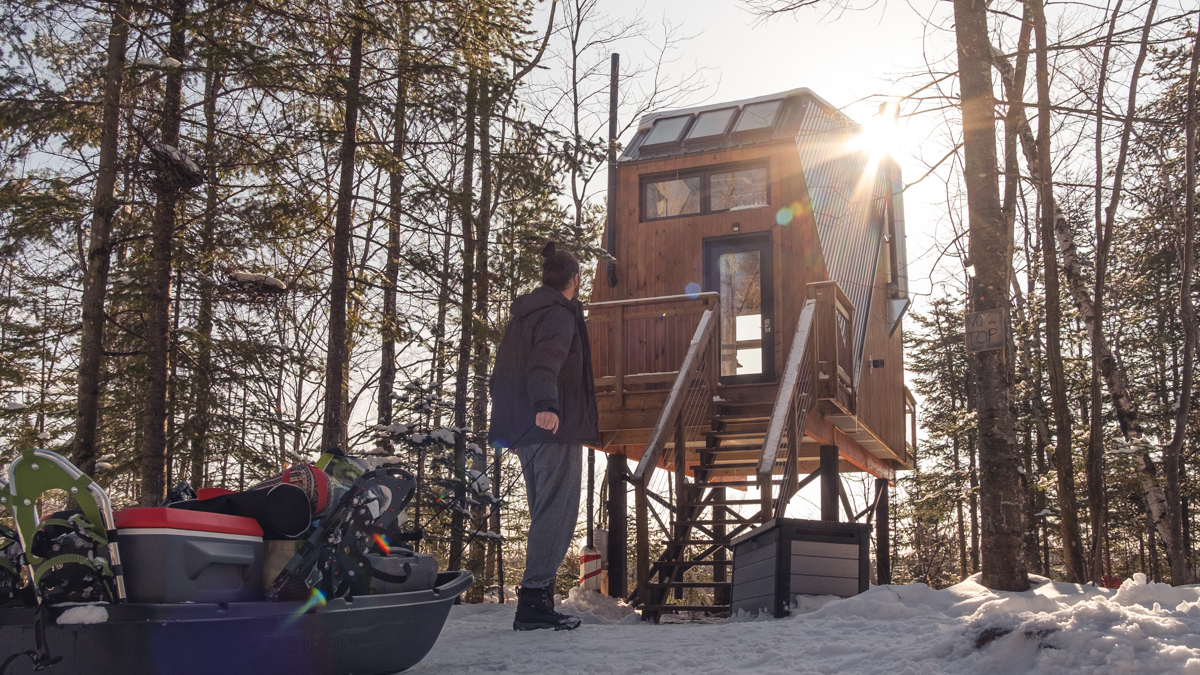
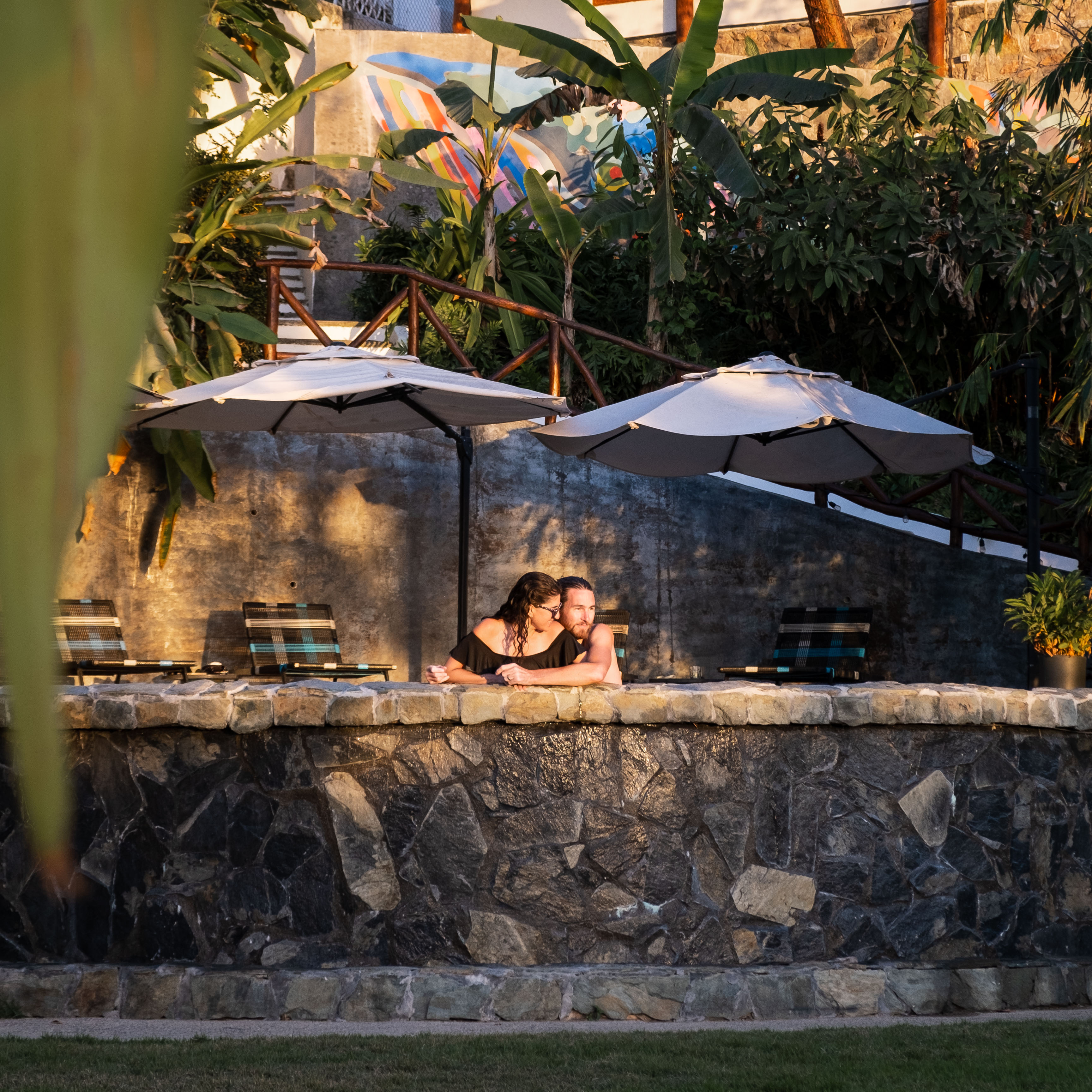


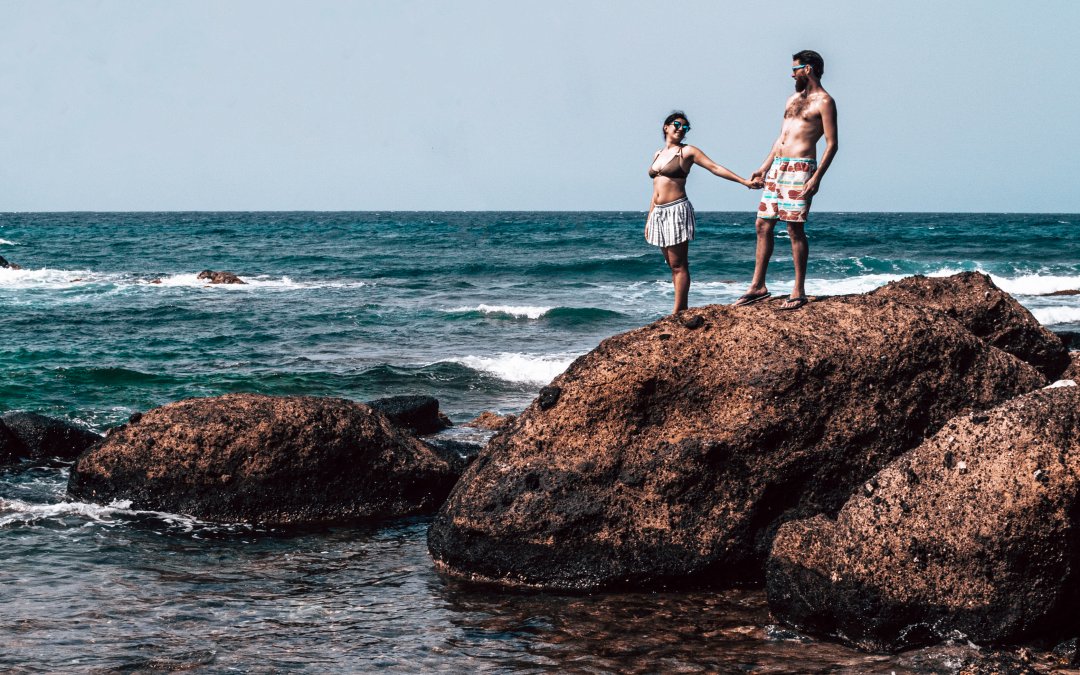
0 Comments